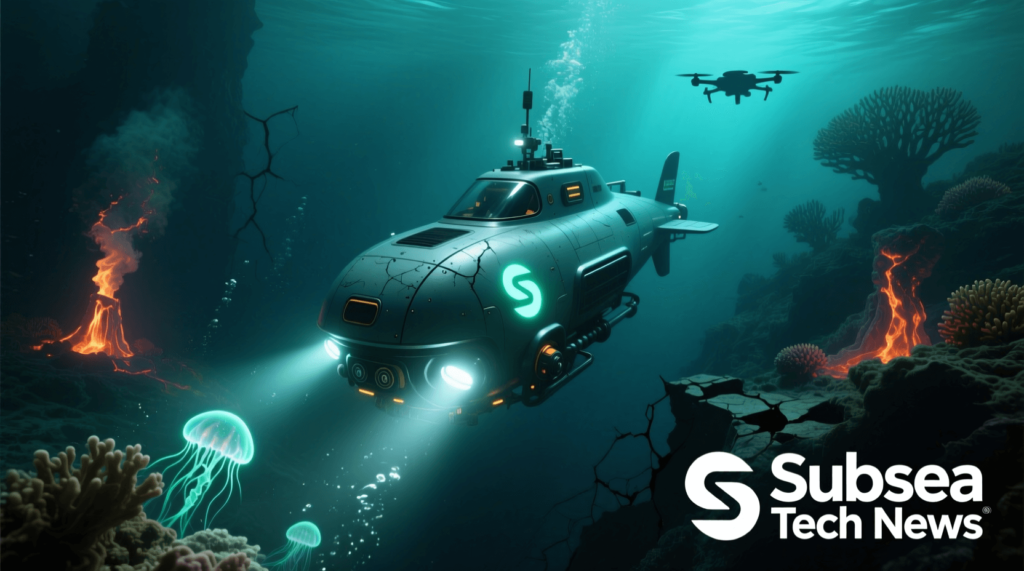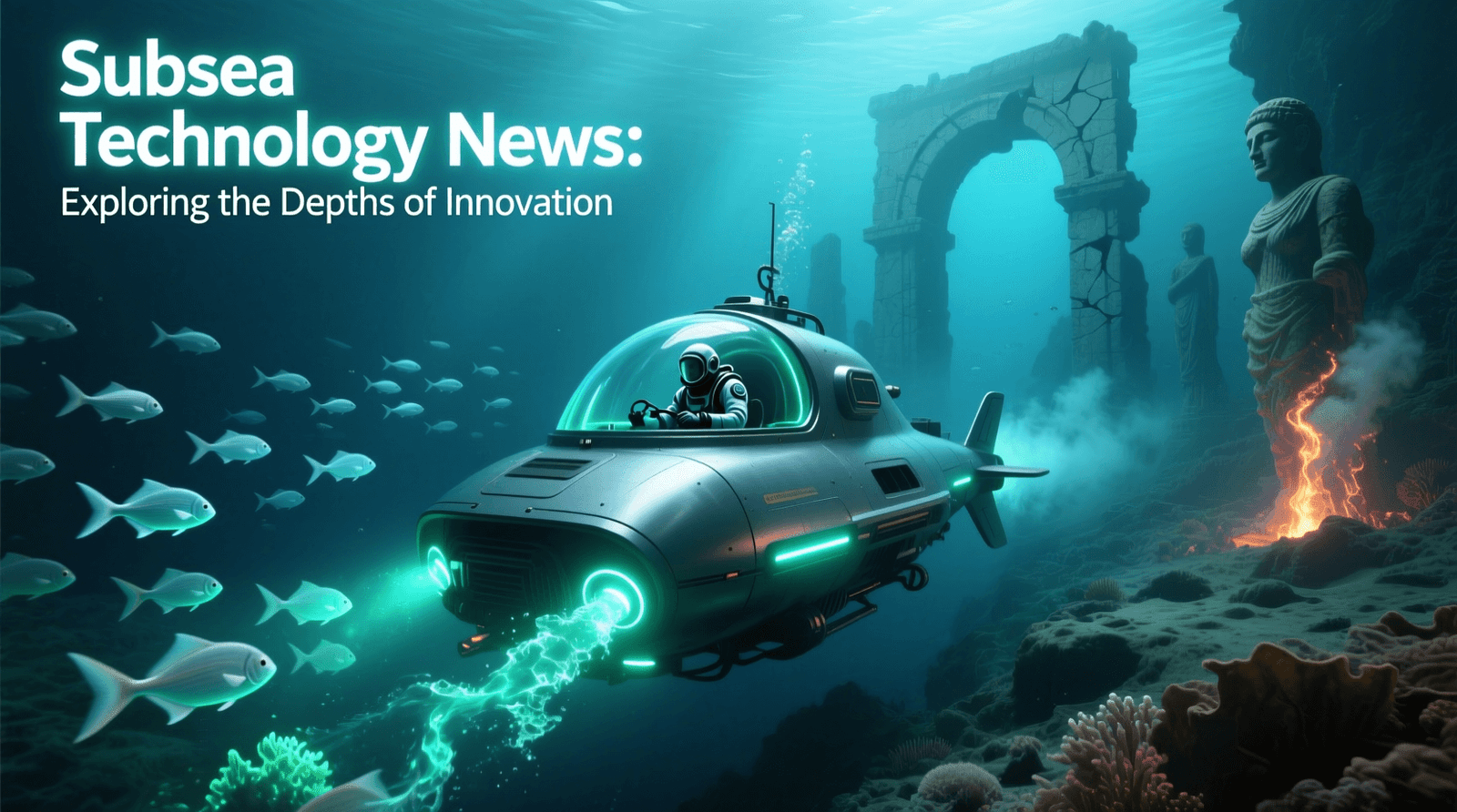Introduction
Have you ever wondered what lies beneath the ocean’s surface besides fish, coral reefs, and mysterious shipwrecks? The truth is, there’s an entire world of subsea technology powering industries, exploration, and even our daily lives in ways we rarely notice. From deep-sea robots to underwater renewable energy, this field is shaping the future quietly—but powerfully.
In today’s fast-moving world of technology news, subsea innovations may not always make headlines like smartphones or AI, but they deserve just as much attention. Imagine the ocean as Earth’s last unexplored frontier, and subsea technology as the brave fleet of explorers making it all possible.
1. What is Subsea Technology?
At its core, subsea technology refers to tools, equipment, and methods used to operate beneath the ocean’s surface. Think of it as a toolbox designed for the deep sea, enabling scientists, engineers, and industries to explore, harvest, and protect resources under extreme conditions.
It’s not just about machines—it’s about solving the puzzle of operating in an environment that’s dark, cold, and crushingly pressurized.
2. Why is Subsea Technology in the News?
Why does subsea tech make headlines in technology news? Because every major breakthrough impacts industries worldwide—from energy to environmental conservation. For example:
- Discovering deep-sea ecosystems untouched by humans.
- Deploying underwater drones for oil exploration.
- Using subsea sensors to track climate change.
In short, subsea technology connects human progress with ocean mysteries.
3. The Role of Subsea Robots and ROVs
Meet the heroes of the deep: ROVs (Remotely Operated Vehicles) and AUVs (Autonomous Underwater Vehicles).
- ROVs are like underwater drones controlled by pilots on ships.
- AUVs are the independent explorers, navigating the seabed without human direction.
These robots act as eyes, hands, and even “ears” under the water—collecting data, repairing equipment, and exploring places no diver could survive.
4. Subsea Technology in Oil and Gas
One of the biggest users of subsea technology is the oil and gas industry. Underwater drilling, pipeline installations, and maintenance would be impossible without robotic arms and sensors.
The industry invests heavily in subsea systems because they reduce risk and make operations in deep waters safer and more efficient.
5. Renewable Energy Beneath the Waves
Did you know subsea technology is key to renewable energy too? Offshore wind farms, tidal turbines, and wave energy converters rely on subsea cables, anchors, and monitoring systems.
Think of these as the “roots” of underwater power plants, firmly planted on the seabed and delivering green energy to millions of homes.
6. Advances in Subsea Communications
Imagine trying to send a text in the middle of the ocean. That’s where subsea communication tech steps in.
Fiber optic cables laid across the seabed carry 95% of the world’s internet traffic. Without them, streaming videos, online shopping, or even international phone calls would be impossible.
It’s like the hidden “neural network” of our digital world—quiet but vital.

7. How Subsea Technology Supports Marine Research
Marine scientists rely heavily on subsea tools. From mapping the ocean floor to monitoring endangered species, subsea technology acts like a microscope for the ocean.
For example, sensors help track ocean temperatures, which are critical for understanding global warming.
8. Military and Defense Applications
Navy forces worldwide use subsea technology for surveillance, submarine detection, and underwater defense systems.
These technologies act as guardians, making sure waters remain safe from threats.
9. Environmental Impact and Sustainability
Like any powerful technology, subsea advancements come with environmental concerns. Offshore drilling and subsea mining can disturb fragile ecosystems.
But on the flip side, subsea technology also helps by:
- Monitoring marine pollution.
- Supporting coral reef restoration.
- Reducing the footprint of human activities.
10. The Challenges of Working Underwater
Why is subsea work so tough? Because nature makes it challenging:
- Extreme pressure that can crush steel.
- Zero visibility in deep waters.
- Harsh conditions that wear down equipment.
This is why subsea engineers are often called the “astronauts of the ocean.”
11. Recent Breakthroughs in Subsea Technology News
Recent headlines in technology news have highlighted:
- AI-driven underwater drones that can map seabeds faster.
- Smart subsea sensors detecting oil leaks instantly.
- Eco-friendly subsea mining equipment designed to minimize damage.
These stories show how innovation is accelerating.
12. Subsea Mining: Promise or Problem?
Subsea mining is a hot debate in technology and environmental circles. While it offers access to valuable minerals like cobalt and rare earths (essential for batteries), it risks damaging marine habitats.
The question is—can we balance innovation with responsibility?
13. The Future of Subsea Exploration
The future looks like something out of a sci-fi movie:
- Swarms of AI-powered drones working together.
- Floating energy hubs under the sea.
- Advanced sensors predicting natural disasters like tsunamis.
We’re only scratching the surface of what’s possible.
14. How Subsea Technology Affects Daily Life
You may not see subsea technology, but it touches your life every day. The internet you use, the fuel powering your car, and even research on climate change—all rely on subsea systems.
It’s like the plumbing in your home—you don’t notice it until it stops working, but it’s essential.
Final Thoughts on the Future of Subsea Technology
The ocean covers more than 70% of our planet, yet we’ve explored less than 20% of it. Subsea technology is our key to unlocking the rest.
From energy to communication, research to defense, subsea systems are shaping our future quietly, beneath the waves. The next time you read technology news, don’t be surprised if it’s the ocean making headlines.
FAQs
1. What is subsea technology used for?
Subsea technology is used for oil and gas exploration, renewable energy projects, underwater communications, marine research, and defense operations.
2. How does subsea technology impact daily life?
It powers internet cables, delivers offshore energy, and supports climate research that influences global policies.
3. What are ROVs and AUVs in subsea technology?
ROVs are remotely operated underwater robots, while AUVs are autonomous vehicles that explore the ocean without human control.
4. Is subsea mining environmentally safe?
Not entirely—while it provides valuable minerals, it risks damaging marine ecosystems. Sustainable solutions are still being researched.
5. What’s the future of subsea technology?
Expect more AI-driven tools, eco-friendly designs, and deeper exploration into areas of the ocean that remain untouched.




